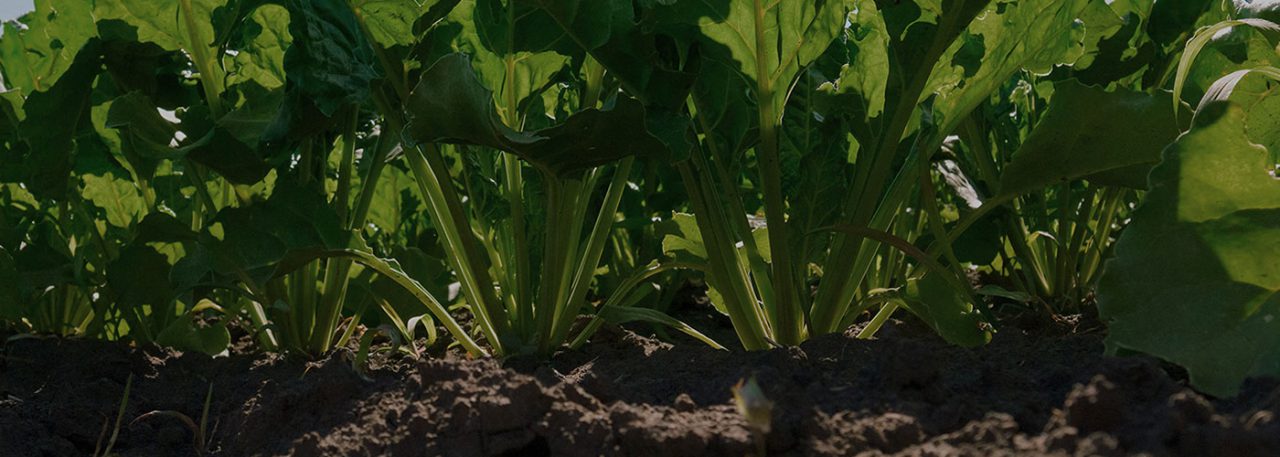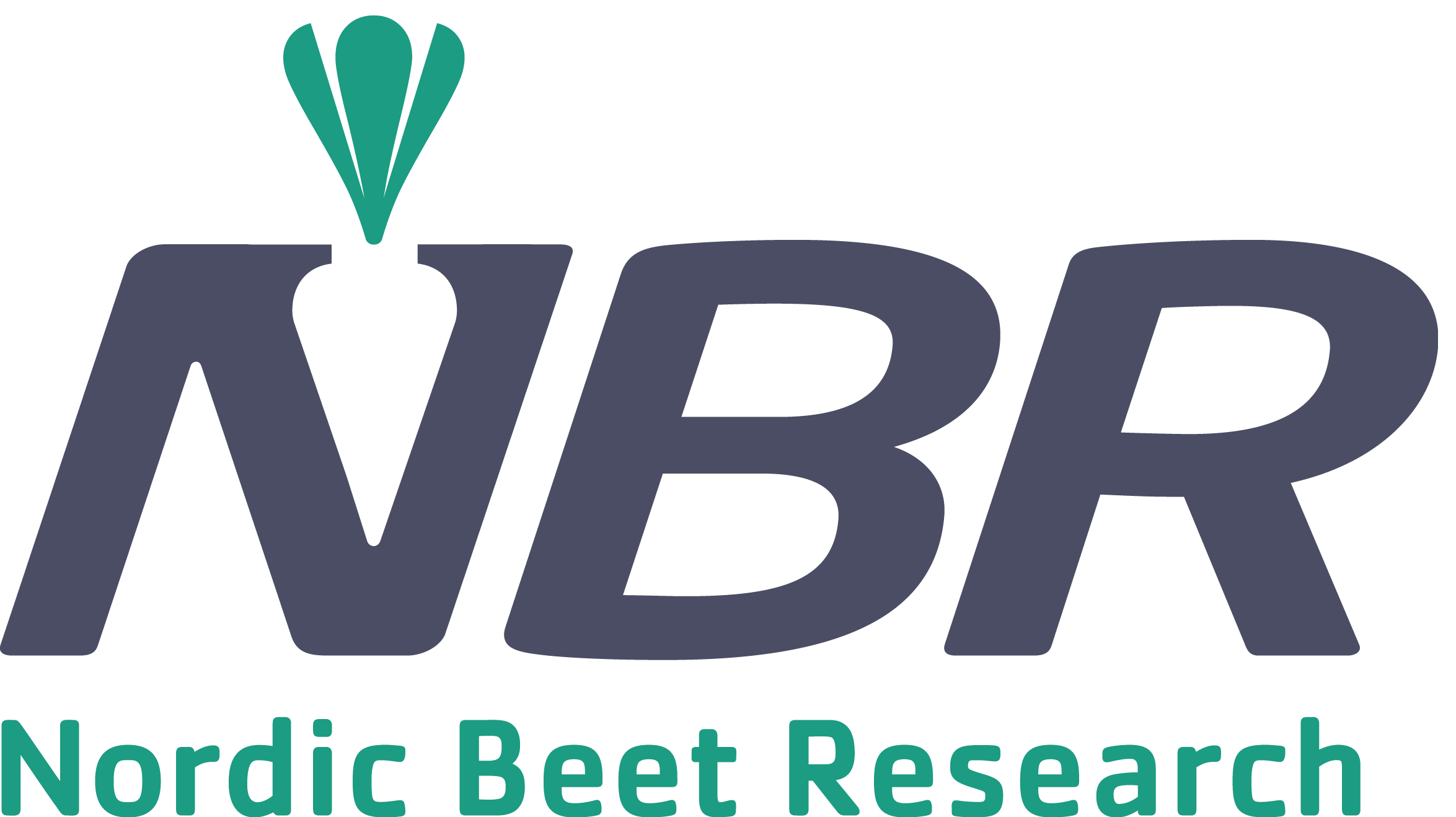
Publications
At our website you can search for reports and other publications. The material is available
in an easy to read format . You can also download them as PDF files . The reports are often in Danish or Swedish and should include a summary in English .
The highest sugar yield was obtained in a treatment without slurry application to catch crops. The trial-series is ended with these trials and the results will be further reported together with trials carried out in 2019-2020. A final conclusion is thus not part of this short report of the 2021-trials.
• Varied N-dose had too little yield effect to allow conclusion about its effects so far.
• It is expected that the trial-setup can be a way to validate application-algorithms obtained in other studies.
• It has to be investigated whether historical N-trials and/or satellite-data can be used to improve the tested algorithms.
Rust has been the dominant leaf disease in 2021 and severe infestations of powdery mildew have come later than usual. Attacks by Ramularia have been weak. The attacks of Cercospora leaf spot have been slightly stronger in the last three years than in previous years
In the leaf disease warning service, 13 fields have weekly been monitored for infestations in a number of varieties. First treatment was recommended in week 30 (July 25.-31.) and second treatment was recommended in week 33 (August 15.-21.).
Fungicide seed treatments with Tachigaren and Vibrance SB has been studied in three field trials. The infestations have been more severe than in previous years’ experiments – thus an average of 13% of the plants in untreated are attacked by damping off in the first registration, and 31% of the plants are attacked in the second registration in early June. This has resulted in relatively large plant losses. These large plant losses have led to relatively high and statistically significant additional yields in the 2021 trials. Several years of trial results with Tachigaren show reduction in damping off and higher final plant numbers. Variable yield increase has been obtained with a tendency of 1 per cent increase in average over the years.
Between April and July 2021, weekly monitoring of pests was carried out in collaboration with Nordic Sugar in 11 sugar beet fields treated with Force 20 CS seed coating. At four of the sites thrips damage has been found above the control threshold. Damages from the pygmy mangold beetle have also been found to a limited extent, with only two sites exceeding the damage threshold. Aphids were not a problem in sugar beet in 2021.
In a field trial with a low attack of pygmy beetles (Atomaria linearis), a yield increase of 7 percent was obtained for seed treatment with Gaucho WS 70 (60 g imidacloprid) and 3 percent for seed treatments with Force 20 CS (10 g tefluthrin), but with no clear difference. In a field trial with low attack of thrips, 0-2 percent yield increase is obtained for seed treatments, however, the yield increase is not significant. Of the two insecticide seed treatments, Gaucho WS 70 has the best effect against both pests. In the two trials, no clear additional yields have been obtained for supplementary foliar spraying with the pyrethroids Lamdex and Mavrik.
On average of 6 trials in 2019-2021 with attacks of pygmy beetles and thrips, seed treatment with Gaucho WS 70 and Force 20 SC have resulted in yield increases of 13 and 11 percent with no statistical difference but statistical difference to untreated. Supplementary sprays have not increased the sugar yield.
In the trials 2020, weak infestations of Myzus persicae did not result in virus yellows. In 2018, in field trials with infestations of black bean aphids (Aphis fabae), seed treatment with Gaucho WS 70 resulted in 12 per cent yield increase and Force 20 CS resulted in 2 percent yield increase, as Force has no effect on prayer aphids.
In three field trials, weed control strategies are investigated. In this year there has generally been a very good effect of all herbicide treatments, which makes the differences between the strategies in this year’s trials relatively small. The cold and wet weather in May caused a lot of phytotoxic damage to the beets where Centium has been used. However, the results show that it has had a minimal (not significant) effect on the yield. Strategies without Betanal and Betanal Power show lower effect than strategies with. In the trials, it appears that part of this lost effect could have been offset by the use of Centium before and / or after emergence. The good effect has been helped by the weather, which this year has been optimal for Centium’s efficacy. In this year’s trial there have been a few strategies without Safari – there has been no significant difference between strategies with and without Safari. It should be noted that in the trials there have been no OSR or other of the species against which Safari usually has a particularly good effect.
Herbicide strategies for controlling volunteer oil seed rape have been studied in two trials. The entries treated with Centium in this year’s trial (pre-emergent, post-emergent or both pre- and post-emergent) have had a better effect against volunteer oil seed rape than the standard treatment without Centium. The highest effect is achieved by using Centium both pre- and post-emergent. In this year’s trials, there has been a high level of phytotoxic damage to the beets as a result of Centium. However, it does not appear to have significantly affected the yield (which is in good agreement with the results in other trials from this year as well as from previous years).
Herbicide treatments have been carried out with different nozzles, to find the optimal method for weed control in bands over the sugar beet rows. The weed control between the rows is done with two times mechanical howing. The treatments are performed with a half dose of NBR’s standard weed control strategy. Because of the generally extremely good effect of weed treatments in 2021, there has been no significant difference between the effect of the different nozzles on the result of the treatments. However, some entries show results – less effect has been achieved where nozzles with coarse droplets have been used compared to fine droplets. In these trials it seems that it is an advantage to angle the nozzles where coarse droplets are used.
There are no conclusions after the first of four project-years (2021-2024).
Ploughing prior to sugar beets – in fields that normally were not ploughed – resulted in yields that on a five-year average were 2-3 percent higher.
Figur 1. Udbytte og kvalitet 2017-2021 for lokaliteterne A og B med og uden (stiplet linje) forudgående pløjning til roer.
